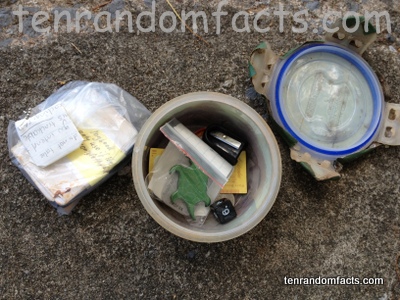Geocaching… a worldwide treasure hunt.
- Geocaching is when you navigate to a particular location using a GPS to find a box or container called a geocache, hidden at a particular set of coordinates.
- Geocaches are found all over the world and are generally placed in interesting locations by people who love to geocache.
- The game of geocaching is free to play and the basic rules of geocaching are: if you take something out of a geocache, put something in; sign the logbook of the geocache; and log your caching experience at the official Geocaching website.
- The word ‘geocache’ comes from the prefix ‘geo-‘, meaning Earth, and the french word ‘cache’ meaning hidden location and was first used by Matt Stum on 30th May 2000.
- The sport of geocaching was created by Dave Ulmer on May the 3rd, 2000 due to new GPS technology that had become available the day before.
- There are over a dozen categories of geocaches including Traditional Caches, Multi-Caches, Mystery Caches, Letterbox Hybrids, Wherigo™ Caches, Event Caches, Mega-Event Caches, CITO Event Caches and EarthCaches™.
- There are approximately 2 million current caches worldwide and over 5 million geocachers.
- The sizes of geocache containers range from as little as 5ml to more than 20 litres and can take the shape of a lunch box container to a fake rock to a teeny tiny box. They contain a logbook or log sheet, and sometimes small swaps, like coins, toys and stickers.
- Non-collectible items can be found in geocaches. These are called travel bugs and geocoins and are trackable via the geoacaching website, and are moved from cache to cache by geocachers.
- Jeremy Irish, an enthusiastic cacher, created the geocaching.com site which became the official website for geocaching on September the 2nd, 2000.






I’m glad I got you started with such a great fun thing to do!
My family does geocaching and we really like it! 😀 Great page!